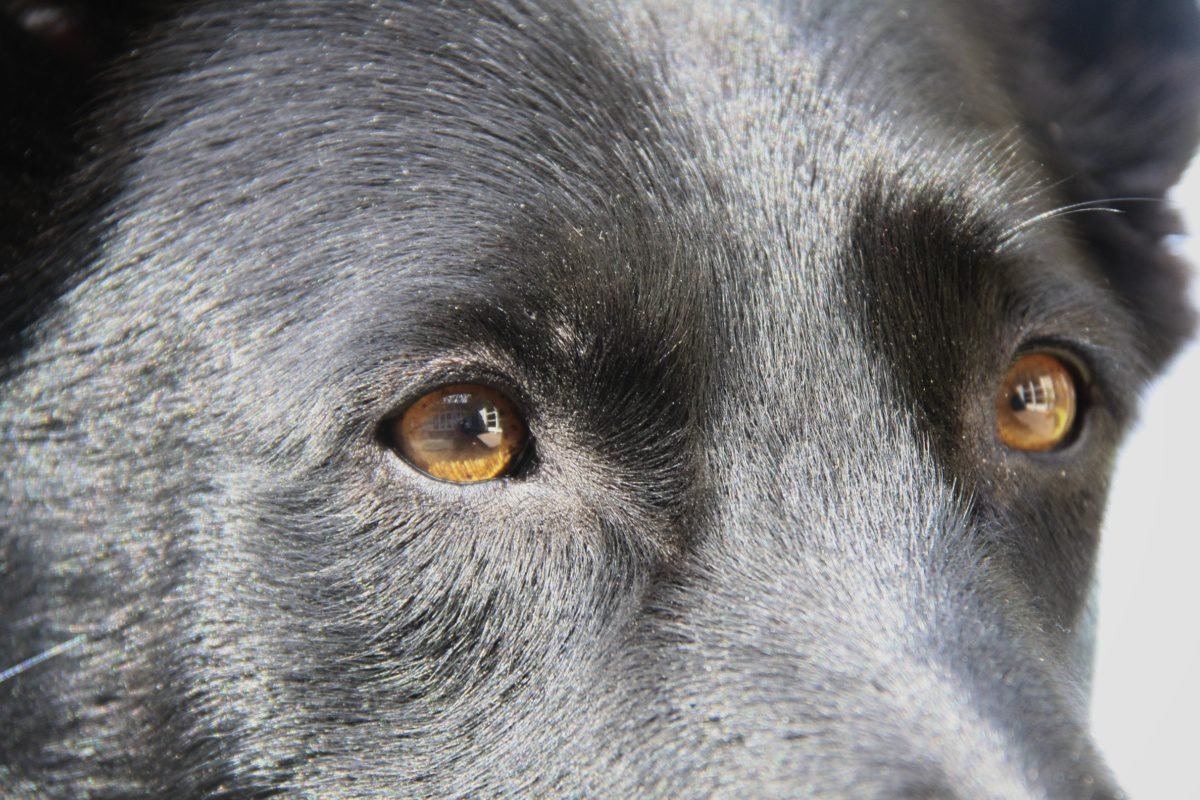The common eye problems which are known to be able to affect dogs include cataracts, cherry eye, conjunctivitis and corneal ulcers.
Symptoms of an eye condition can generally include the affected dog squinting and avoiding any bright light. The dog may release its tears in excess and in some cases, some mucous or serous discharge. Inflammation and sometimes cloudiness may also be signs of an eye problem. The eye may be pink, red, or sore. In order to relive itself of the discomfort, the affected dog may rub the eye with a paw or against the ground or carpet.
Cataracts. There are several factors which cause cataracts in dogs, these include age, certain diseases, genetics and trauma. Symptoms include a whitening of the lens – the clear part of the eye needed for focussing. The cloudiness is opaque and thus cannot be seen through, impairing sight and may lead to blindness. 75% of dogs develop cataracts and blindness in both eyes within one year of being diagnosed with diabetes.
Cherry Eye is a condition in dogs in which there has been a prolapse of a gland of the third eyelid – known as the canine nictitans gland. The gland is a tear producing gland. Cherry eye is more commonly seen in younger dogs between the ages of six weeks and two years old. However, it can occur at any age. The dog breeds more at risk of this condition are the basset hound, beagle, bulldog, Chihuahua, and the cocker spaniel.
Conjunctivitis (Pink Eye) The conjunctiva is the delicate membrane that lines the inner surface of the eyelids and covers the outer layer of the eye. When it becomes inflamed or infected, it often leads to what is commonly known as pink eye. Conjunctivitis is the most common eye problem in dogs, and it usually heals without complication if properly treated. If left untreated however, it may spread to deeper areas of the eye. Conjunctivitis is highly contagious and zoonotic, meaning it is transferable from human to dog, dog to dog and even insect to dog.
Corneal ulcers occur as a result of the corneal epithelium (outer layer) being scratched or damaged. Symptoms include holding the eye closed, light sensitivity, redness, eye discharge, and sometimes clouding of the cornea. Corneal ulceration is seen more in dog breeds with protruding eyes, such as the Pekinese and Shih Tzu breeds.
Dry Eye Keratoconjunctivitis sicca (KCS) is a disorder of the eye glands that produce the liquid part of tears. Dogs with KCS don’t produce enough tear film to keep their eyes adequately lubricated. This causes a dog’s cornea and conjunctiva to become dry, thickened, red, irritated and inflamed. If not diagnosed and managed, KCS can lead to painful corneal ulceration, eye infection, impaired vision, and even blindness.
Entropion is the inward reversal or rolling of the eyelids so the eyelashes are scratching against the surface of the eye. Typically the lower eyelid is the affected area. However, it can occur on the upper eyelid as well. It’s believed to be an inherited trait. Many puppies develop this early in life, but it can occur at any time, especially in dogs with lots of skin in the face area, such as the Mastiffs and Bulldogs.
Excessive Tearing (epiphora). Typically, a sign of eye infections and irritations; especially obvious on light coloured dogs. The tears create a moist, hot area around the eyes which allows bacteria to grow. The reddish colour (known as Red Yeast), can be very problematic. In some cases blocked tear ducts may also lead to excessive tearing and bacterial infections. Breeds such as the Shih Tzu, Cocker Spaniel, Maltese and Poodle (toy) often have excess tearing and fine hair around the eyes and face. The facial and nasal skin folds of these breeds collect the moisture, wick it along the hair, and provide a favourable environment for bacterial overgrowth.
Glaucoma results when fluid in the eye is produced faster than it can be removed, or there is a blockage to drainage of the fluid. This can lead to optic nerve and retinal damage, and subsequent vision loss. Primary glaucoma is a genetic dog disease that may affect certain breeds such as Beagles and Cocker Spaniels. Usually the second eye becomes affected within two years of diagnosis of the first eye.
Lenticular sclerosis is the medical term for a dog with ‘cloudy eye’, a blueish haze that develops in the lens of the eye in middle-aged to senior dogs. It’s a normal, slowly progressive change in aging pets, and it doesn’t appear to affect vision. Usually it occurs in both eyes at the same time, fairly evenly. This condition is not the same as cataracts. Lenticular sclerosis occurs in roughly 50% of dogs over 9 years old and 100% in dogs over 13.
EYE FIRST AID
- Flush the eye with Saline Solution – Gently splash some of this solution onto your dog’s eye before you start to wipe. Mix a teaspoon of salt in a glass of warm water and use a cotton ball to wipe away any discharge or debris you see.
- Apply a cold compresses – Prepare a herbal tea (Chamomile, Eyebright, Green Tea) and allow it to cool down thoroughly. Soak a cotton ball in the tea and cleanse the dog’s eye with it.
- Vitamin A, C and bioflavinoids can improve the recovery time from an infection. These supplements also have properties that can boost your dog’s immune system and prevent the potential for a further outbreak of an eye infection.
Any eye abnormalities need veterinarian attention as soon as possible. Remember some eye conditions can result in permanent blindness, so early treatment is imperative.

